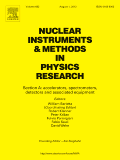
NUCLEAR INSTRUMENTS & METHODS IN PHYSICS RESEARCH SECTION A-ACCELERATORS SPECTROMETERS DETECTORS AND ASSOCIATED EQUIPMENT
Scope & Guideline
Transforming the landscape of nuclear research through advanced tools.
Introduction
Aims and Scopes
- Detectors and Detector Technologies:
Research on new detector designs, materials, and technologies, including semiconductor detectors, scintillators, and gas-based detectors, aimed at enhancing the detection capabilities for various applications in nuclear and particle physics. - Instrumentation for High-Energy Physics:
Development and optimization of instruments such as calorimeters, tracking detectors, and spectrometers, focusing on improving performance metrics like time resolution, energy resolution, and efficiency. - Radiation Measurement and Safety:
Studies focused on radiation detection methodologies, including neutron and gamma spectrometry, and the development of safeguards for radiation environments in nuclear facilities and experiments. - Simulation and Modeling:
Use of Monte Carlo simulations and other analytical methods to model detector responses, optimize designs, and predict performance in various experimental setups. - Data Acquisition and Signal Processing:
Innovations in data acquisition systems and signal processing techniques, including machine learning applications for event classification and noise reduction in detector signals.
Trending and Emerging
- Machine Learning and AI in Detector Systems:
There is a growing trend towards integrating machine learning and artificial intelligence into detector systems for tasks such as data analysis, event classification, and optimization of detector performance. - Advanced Materials for Detectors:
Research into novel materials, such as organic scintillators, diamond detectors, and high-Z materials, is on the rise, driven by the demand for improved sensitivity and performance in radiation detection. - Hybrid and Modular Detector Designs:
Emerging interest in hybrid detector systems that combine different detection technologies (e.g., scintillator and semiconductor) to leverage the advantages of each for enhanced detection capabilities. - Environmental and Sustainable Detection Technologies:
An increasing focus on developing eco-friendly detector technologies and methods that minimize the environmental impact of radiation detection and measurement, aligning with global sustainability goals. - Neutron Detection Innovations:
Recent advancements in neutron detection technologies, particularly those using novel scintillator materials and hybrid systems, are becoming a prominent area of research as the demand for neutron diagnostics increases.
Declining or Waning
- Traditional Radiation Detection Methods:
There appears to be a declining focus on conventional detection methods, such as simple scintillation counters and ionization chambers, as newer technologies and materials are developed that offer better performance and versatility. - Analog Electronics in Detection Systems:
With the rise of digital signal processing and FPGA-based systems, there is a noticeable decrease in research centered on traditional analog electronics for signal processing in detectors. - Low-Resolution Imaging Techniques:
Research on low-resolution imaging techniques, such as earlier generation gamma cameras, has seen a decrease as advancements in high-resolution and more sensitive imaging technologies become available. - Single-Use and Non-Reusable Detectors:
There is a shift away from single-use detectors toward more sustainable and reusable detector systems, reflecting a growing concern for environmental impact and resource efficiency.
Similar Journals
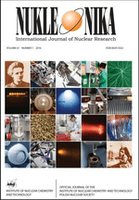
NUKLEONIKA
Exploring the Depths of High Energy PhysicsNUKLEONIKA, published by SCIENDO, is a leading open access journal that has been serving the scientific community since its establishment in 1968. Focused on the domains of Nuclear and High Energy Physics, Condensed Matter Physics, and Nuclear Energy and Engineering, this journal provides a platform for innovative research and technological advancements in a variety of interdisciplinary fields. With an impressive history of publications and a current Q3 ranking in several categories, including Safety, Risk, Reliability and Quality and Waste Management and Disposal, NUKLEONIKA is recognized for its significant contributions to scientific discourse. Open access since 2014, the journal ensures that all research outputs are freely available, facilitating broad dissemination and accessibility for researchers, professionals, and students alike. Located in the heart of Warsaw, Poland, NUKLEONIKA aims to inspire collaborative efforts and foster a deeper understanding of complex physical phenomena and their practical implications.
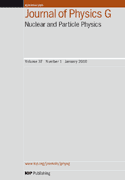
JOURNAL OF PHYSICS G-NUCLEAR AND PARTICLE PHYSICS
Exploring the Depths of High Energy PhysicsJOURNAL OF PHYSICS G-NUCLEAR AND PARTICLE PHYSICS, published by IOP Publishing Ltd, stands as a premier journal in the realm of Nuclear and High Energy Physics. With an established presence since 1989 and currently converging toward 2024, this influential journal emphasizes groundbreaking research and discoveries in particle physics, fostering the dissemination of knowledge among a global audience of researchers, professionals, and students. Recognized for its high-quality publications, it holds a Q1 ranking in its category for 2023, placing it at an impressive 87th percentile among 87 journals in its field as per Scopus Rankings. The journal's impact is reflected in its esteemed reputation, making it an essential resource for advancing the frontiers of physics. Although it currently does not operate under an open access model, the journal ensures that subscribers receive comprehensive insights into the latest developments and theoretical advances that shape our understanding of the universe.

Radiation Detection Technology and Methods
Pioneering Research for Enhanced Energy SecurityRadiation Detection Technology and Methods is a prominent academic journal published by Springer Singapore Pte Ltd, dedicated to advancing the field of nuclear and high-energy physics, as well as nuclear energy and engineering. Established in 2017, this journal provides a platform for the dissemination of pioneering research and innovative methodologies in radiation detection technology. As of 2023, it holds a commendable Q2 ranking in both the categories of Nuclear and High Energy Physics and Nuclear Energy and Engineering, underscoring its significance in fostering scholarly discourse within these vital fields. With ISSN 2509-9930 and E-ISSN 2509-9949, the journal aims to cater to a diverse audience of researchers, professionals, and students, emphasizing open access to knowledge. The journal's contributions are particularly crucial for those engaged in the development of safer and more efficient radiation detection techniques, ultimately bridging the gap between theory and practical applications in energy security and health physics. For researchers seeking a dedicated outlet for their work, Radiation Detection Technology and Methods represents an invaluable resource and an opportunity to influence the future of radiation science.
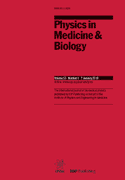
PHYSICS IN MEDICINE AND BIOLOGY
Innovating Healthcare Through Physics and BiologyPHYSICS IN MEDICINE AND BIOLOGY is a prestigious journal published by IOP Publishing Ltd, with a storied history dating back to 1956 and extending through 2024. This internationally recognized journal caters to the interdisciplinary fields of medical physics and bioengineering, making significant contributions to the research and development of advanced diagnostic and therapeutic technologies. It holds an impressive Q1 ranking in both Radiological and Ultrasound Technology and Radiology, Nuclear Medicine and Imaging categories, reflecting its critical role in disseminating high-quality research. With a significant focus on merging the principles of physics with advancements in medicine, PHYSICS IN MEDICINE AND BIOLOGY serves as an essential resource for researchers, professionals, and students alike, fostering innovation and enhancing collaboration in the healthcare sector. Although the journal is not currently open access, it maintains robust participation in the Scopus database, ranking #62 out of 333 in Radiology, Nuclear Medicine and Imaging and #17 out of 63 in Radiological and Ultrasound Technology, signifying its influence and reach within these disciplines.

Nuclear Physics and Atomic Energy
Advancing knowledge in nuclear physics and energy.Nuclear Physics and Atomic Energy is a reputable open-access journal that focuses on the fields of nuclear physics and high-energy physics, providing a forum for researchers, professionals, and students to share their findings and advancements. Published by the Institute of Nuclear Research, National Academy of Sciences of Ukraine, this journal has been committed to disseminating knowledge since its inception in 2006, ensuring that scientific advancements remain accessible to a global audience. With an ISSN of 1818-331X and an E-ISSN of 2074-0565, the journal features a diverse array of articles that span the continued exploration and application of nuclear phenomena. Although currently categorized in the Q4 quartile for Nuclear and High Energy Physics in 2023, the journal is steadily working towards increasing its impact and engagement within the academic community. With a Scopus rank of #74 out of 87 in its category, it serves as a valuable resource for advancing crucial research in a vital scientific area. Researchers are encouraged to contribute their innovative studies to foster collaboration and knowledge sharing in this dynamic field.
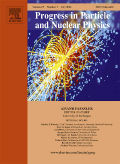
PROGRESS IN PARTICLE AND NUCLEAR PHYSICS
Exploring the Frontiers of Particle and Nuclear SciencePROGRESS IN PARTICLE AND NUCLEAR PHYSICS is a prestigious academic journal published by Elsevier, focusing on the dynamic fields of particle and nuclear physics. Established in 1978 and continuing through 2024, this journal is recognized for its significant contributions to the scientific community, holding a Q1 ranking in Nuclear and High Energy Physics and topping the Scopus ranking in its category. With an impactful platform that encourages the dissemination of groundbreaking research, it attracts a diverse readership of researchers, professionals, and students eager to explore the latest advances in these fields. The journal is headquartered in Amsterdam, Netherlands, and provides an essential resource for those seeking to understand complex phenomena in particle and nuclear science. Although it does not offer Open Access options, it continues to uphold a reputation of excellence and rigor, making it a vital source of information in its domain.
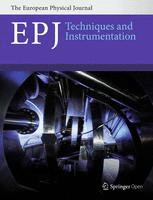
EPJ Techniques and Instrumentation
Pioneering innovative techniques for interdisciplinary research.EPJ Techniques and Instrumentation is a leading journal published by Springer that focuses on advancing the field of instrumentation and measurement techniques across various disciplines. With a commitment to open access since 2014, this journal ensures that the latest research is freely available to academics, providing an inclusive platform for the dissemination of innovative methodologies and technological advancements. The journal serves as an essential resource for researchers, professionals, and students dedicated to the development and application of cutting-edge techniques in their respective fields. While the journal's scope encompasses a wide range of topics, it consistently encourages interdisciplinary collaboration and the exchange of ideas. As a cornerstone publication in the scientific community, EPJ Techniques and Instrumentation is poised to impact the trajectory of future research, fostering a deeper understanding and better utilization of instrumentation in scientific inquiry.

RADIATION MEASUREMENTS
Transforming Understanding through Precision Measurements.RADIATION MEASUREMENTS is a highly regarded academic journal published by Pergamon-Elsevier Science Ltd, focusing on the interdisciplinary field of radiation science and instrumentation. With an ISSN of 1350-4487 and an E-ISSN of 1879-0925, this journal aims to disseminate cutting-edge research and practical advancements from 1994 to 2024. It holds a commendable position in the Scopus rankings, being categorized in the top quartiles (Q2) for both Instrumentation and Radiation, reflecting its significance in the scientific community with a notable percentile of 64th and 59th, respectively. Although it does not offer Open Access options, the journal serves as a vital resource for researchers, professionals, and students seeking to explore innovations that shape the understanding and measurement of radiation phenomena. With a commitment to high-quality research, RADIATION MEASUREMENTS continues to contribute essential knowledge in the fields of physics and astronomy, positioning itself as a key publication for those dedicated to advancing radiation technology and its applications.

ATOMIC DATA AND NUCLEAR DATA TABLES
Exploring the depths of atomic and nuclear science.ATOMIC DATA AND NUCLEAR DATA TABLES, published by Academic Press Inc Elsevier Science, is a leading journal in the fields of atomic and molecular physics, as well as nuclear and high energy physics. With an ISSN of 0092-640X and an E-ISSN of 1090-2090, this esteemed journal has been providing comprehensive data tables and significant research insights since its establishment in 1969. Spanning until 2024, it continues to serve as an invaluable resource for researchers and professionals aiming to deepen their understanding of atomic interactions and nuclear processes. Holding a commendable Q2 ranking in both relevant categories, it is recognized for its impact, reflected in Scopus rankings, where it ranks 25th out of 87 in Nuclear and High Energy Physics, and 87th out of 224 in Atomic and Molecular Physics. While it does not offer open access, the journal remains a crucial repository for high-quality data essential for scientific endeavors and advancements in these complex fields.

Journal of Instrumentation
Elevating the discourse in instrumentation and mathematical innovation.Journal of Instrumentation, published by IOP Publishing Ltd, stands at the forefront of the fields of instrumentation and mathematical physics, playing a crucial role in advancing the knowledge and practice within these domains. With an ISSN of 1748-0221 and an esteemed position as a Q2-ranked journal in both categories as of 2023, it showcases high-quality research and innovative findings that contribute to the broader scientific community. Operating since 2006, this journal facilitates the dissemination of cutting-edge developments and interdisciplinary approaches in measurement techniques and their applications, making it a vital resource for researchers, professionals, and students alike. The journal maintains a competitive edge, ranked in the 59th percentile in mathematical physics and the 35th percentile in instrumentation according to Scopus rankings, reflecting its commitment to quality and impact. With a focus on accessible scientific communication, the Journal of Instrumentation is dedicated to nurturing a collaborative environment that promotes the integration of theoretical advancements and practical issues, providing an essential platform for sharing vital research discoveries.